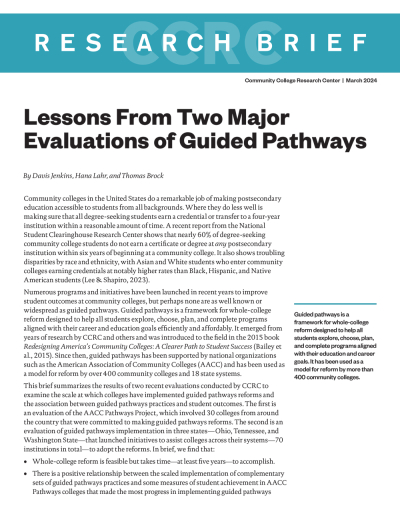Self-Directed Learning Skills: Strategies to Support Student Learning in Online STEM Courses
This Postsecondary Teaching with Technology Collaborative brief discusses some of the challenges with online teaching reported by STEM instructors, describes a self-directed learning (SDL) framework to address these challenges, and highlights support strategies that can be integrated into teaching practices.
Understanding Dual Enrollment
Challenges and Opportunity: An Examination of Barriers to Postsecondary Academic Success
This Annenberg Institute working paper examines the relationship between community college students’ academic persistence and their time utilization, engagement with campus resources, and financial and mental well-being, as well as the relative importance of these factors for students’ educational attainment.
Lessons From Two Major Evaluations of Guided Pathways
This CAPR report highlights the roles of key actors and of state context and policy in the implementation of multiple measures assessment (MMA) at 12 two- and four-year colleges in Arkansas and Texas. It also discusses costs and describes challenges, such as obtaining staff buy-in, managing student data, and ensuring sufficient staffing.












